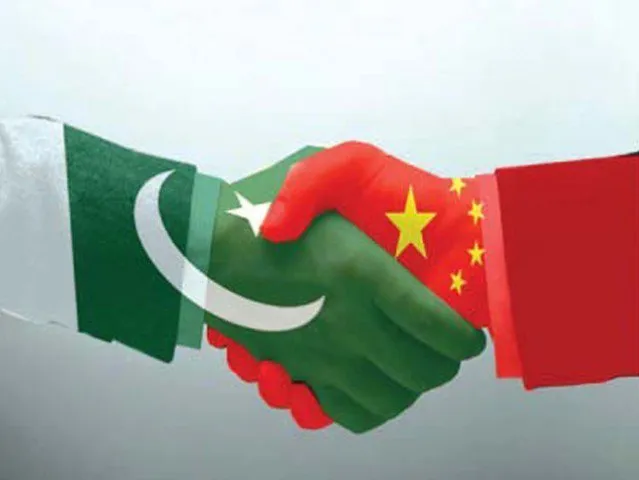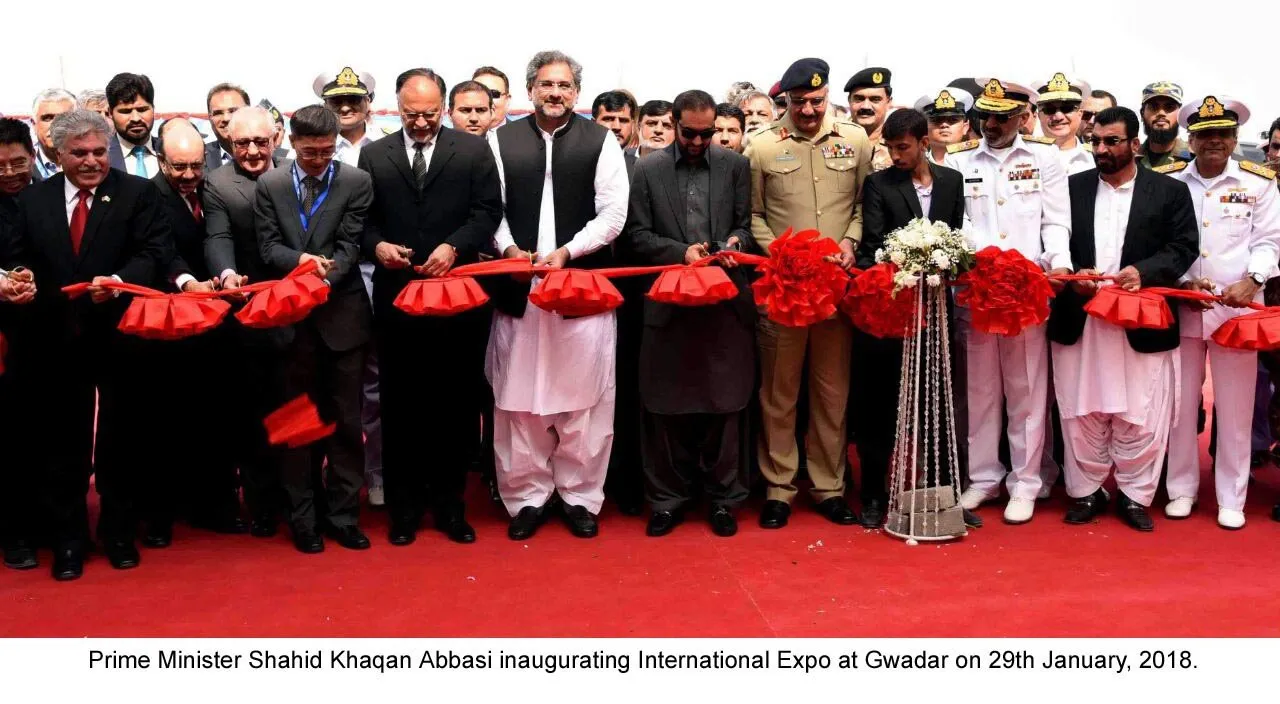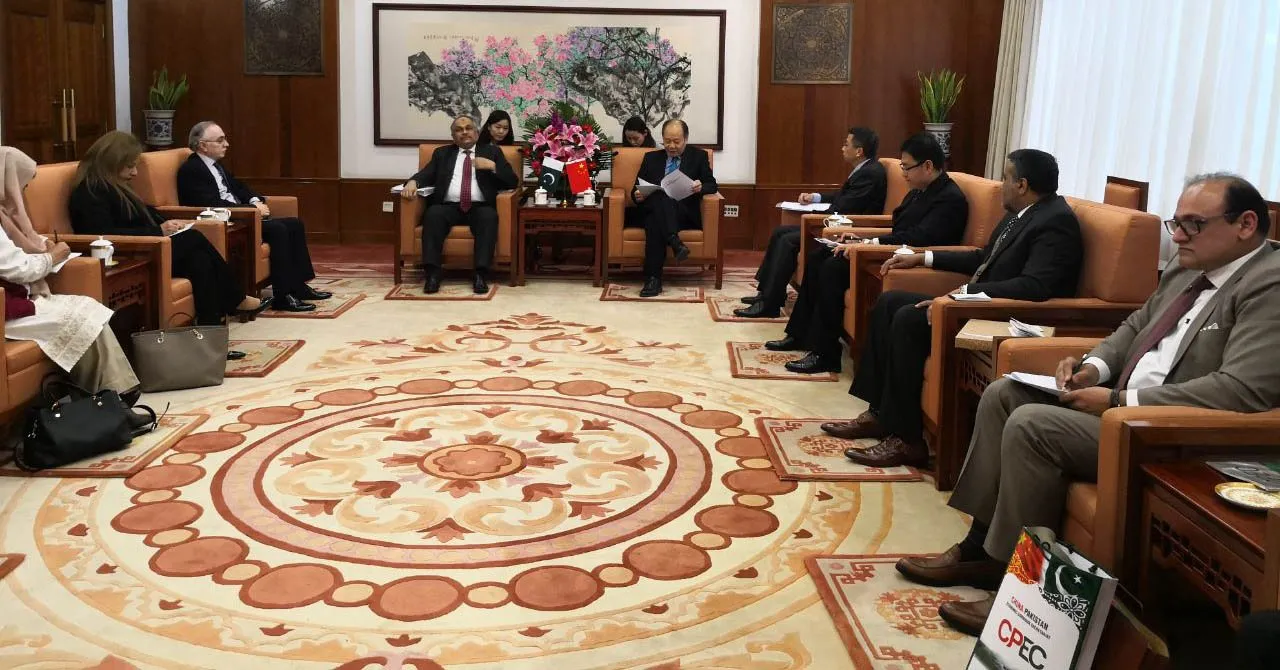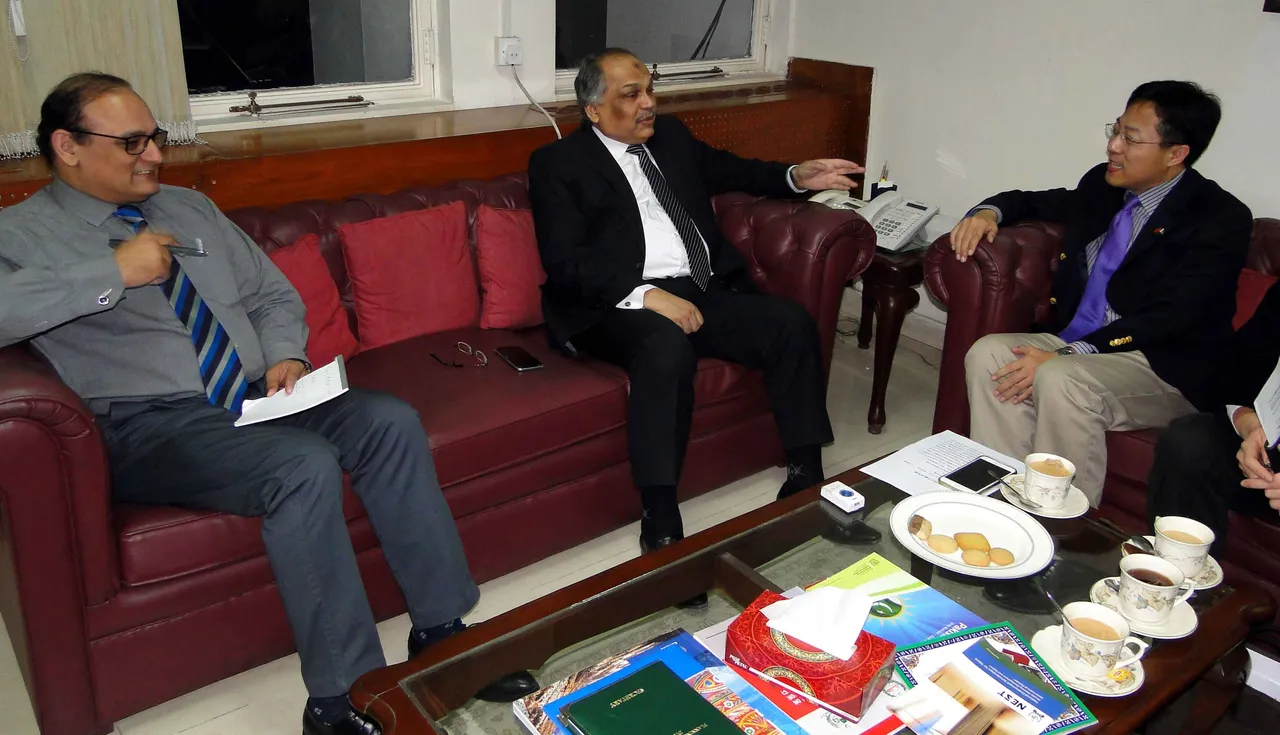INTRODUCTION
Sustainable growth and development in China during the last four decades has assigned the country a special status in the world economy. The financial crisis of 2007-08 not only strengthened the Chinese economy but also enhanced its role and say in global governance. Though China has started redefining its role in the 1990s, war on terror gave it an ample time to think and devise its strategies in accordance with the new world scenario. During this period when the world was engaged in war on terror and was hit by financial crises, China increased its trade and international recognition, revisited its old relations, and ventured in new partnerships and friendships. President Xi Jinping for the first time raised the slogan of constructive engagements across the world. South Asia,being the neighbour of China, has a special significance in enhancing the agenda of constructive engagements, which is now evident from the active engagement of Chinese leadership in South Asia.Mr. Xi visited South Asian countries, and announced huge investment packages and trade enhancement programs for them. China has become actively involved in Afghanistan for peace building and development. In line with its defined strategic order, China has now started working more closely with Pakistan in areas of new investments and partnerships. The process started way back in the 1990s; however, a joint declaration in this regard was the concrete outcome after a meeting between President Hu Jintao and President Gen. Pervaiz Musharraf in 2003 at Beijing (Fmprc, 2003). The declaration highlighted the areas of cooperation for future. A joint statement in 2006 further strengthened the cooperation when Free Trade Agreement (FTA) was signed during the visit of President Hu Jintao to Islamabad in 2006. It gradually expanded the trade volume between Pakistan and China from $1 billion in 1998 to $15.15 billion in 2015 (VANDEWALLE, 2015). This enhanced cooperation then laid the foundation of China-Pakistan Economic Corridor (CPEC). These days, CPEC is a hot topic and the most debated subject in Pakistan, South Asia, and Asia and to some extent in other parts of the world. In Pakistan, there is confusion about the corridor’s route, as provinces have shown their concern over it.South Asian countries are divided on the subject while some look at it as an opportunity for development and prosperity. Others look at it as an alliance against their interests. Asian countries and global community have mixed opinion. Keeping in view all the perceptions, this paper demystifies the confusion and presents the facts.

Picture Taken From Google Search
Historical Background of Pak-China Relations
Pakistan and China have been enjoying cordial and friendly relations since 1950. The first decade of relations was not as smooth as it were after 1960 especially after the China-India war, and PakistanIndia war. At first, Pakistan was reluctant to accept China due to differences between communist and capitalism blocs. The two countries also did not know much about each other, which hindered their bilateral cooperation. Fortunately, at that time the then minister for foreign affairs, Sir Zafarullah Khan, had some knowledge about Chinese mindset, which paved the way for PakistanChina relations (Chaudhri, 1987). Relations between the two countries later strengthened after the devaluation of Indian currency in 1949, which impacted Pakistan’s economy badly. Pakistan was importing coal for its nascent industry, but the devaluation halted the trade leaving Pakistan with no choice except to enter into an agreement with China on barter trade of coal for cotton. Pakistan also supported the permanent seat of China at United Nations Security Council (Arif, 1984). Relations further enhanced after the two countries signed a trade agreement in 1953 (Dixit, 1987). Signing of SEATO and CENTO in 19954 and 1955 respectively created some suspicion among Chinese, as they conceived it as a threat to regional and national security. However, Pakistan clarified China that it only signed these as a safeguard against the threat from India (Syed, 1974). Pakistan also utilized the Bandung Conference to clarify the doubts and China endorsed Pakistan’s seven pillars of peace at the conference (Chaudhri, 1970). President Ayub Khan’s statement in 1959 about Tibet again created problems for Pakistan with regard to relations with China (Jain, 1981). Fortunately, the damage was controlled by the then Foreign minister Zulfikar Ali Bhutto and foreign secretary S. K. Dehlavi. Signing of agreement on border demarcation by Mr. Bhutto in 1963 gave an impetus to Pak-China relations. Moreover, China also helped Pakistan during the war of 1965, which brought two nations very close to each other. However, China’s neutral stand during 1971 was conceived by many Pakistani leaders as a sign of no interest (Javaid and Jahangir, 2015). From 1970s onwards, the relations between Pakistan and China strengthened more in all sectors. China has generously supported Pakistan in military, missile and nuclear program, and economic sector, even during the sanctions imposed by the US. This led to confidence building between Pakistani and Chinese policy makers and people. As a result of this long-standing friendship, we see a big achievement in the form China-Pakistan Economic Corridor (CPEC).

Photo taken from Google Search
China-Pakistan Economic Corridor
The history of Pak-China relations can be traced back since 1950. Both China and Pakistan managed their relationship in a very productive and articulated way. Although confusion over some issues, especially during the first half 1950s and 1970s, impacted the ties but the two nations never let them altogether spoiled. Both of themhelped each other at the crucial times. Pakistan helped China to connect to the world. Pakistani air space was opened for Chinese airline and PIA made travel easy for Chinese. Pakistan also advocated and supported the admission of China in UN system and permanent member of UN Security Council.

Photo taken from Google Search
Furthermore, Pakistan played the role of facilitator to arrange visit of Henry Kissinger to China, which laid the foundation for the visit of President Nixon in 1972. On the other hand, China also supported Pakistan during the times of need and helped Pakistan built its military and economic capabilities
especially Heavy Mechanical Complex, Taxila in 1968, Ordinance Factory in East Pakistan in 1970 and Aeronautical Complex (Javaid and Jahangir, 2015).

Photo taken from Google Search
Strategic location of CPEC is cortical, as it is located at the meeting point of Road Belt and Maritime Belt (Shah, 2015). It will provide opportunity to China to establish and strengthen its position in Indian Ocean. It will also help secure the energy route from Middle East and Africa, which is critical for China’s future development. Route of energy will also be shortened considerably (Bhattacharjee, 2015).It would also be easy and cost effective for China to reach the Middle East and North African Markets along others. Analysis of facts and figures shows that CPEC is critically important for both countries.

Photo taken from Google Search
Provincialism should not be given the chance to hijack the development agenda by any stakeholder, including the federal government.